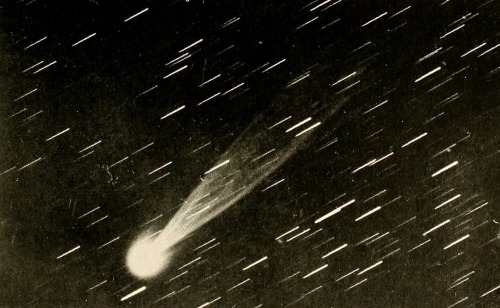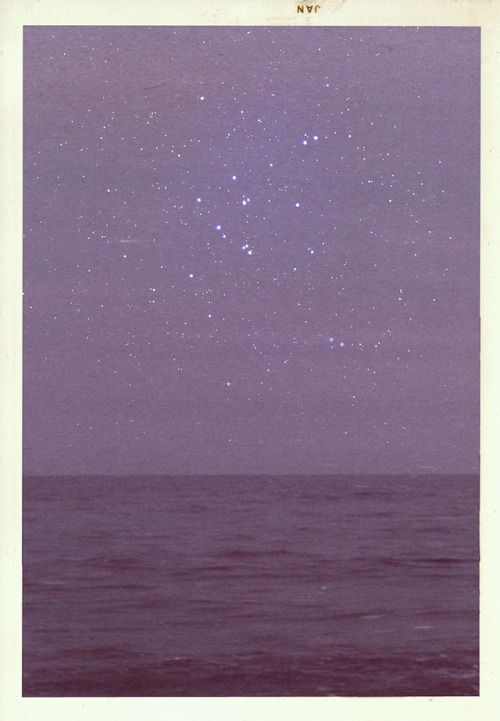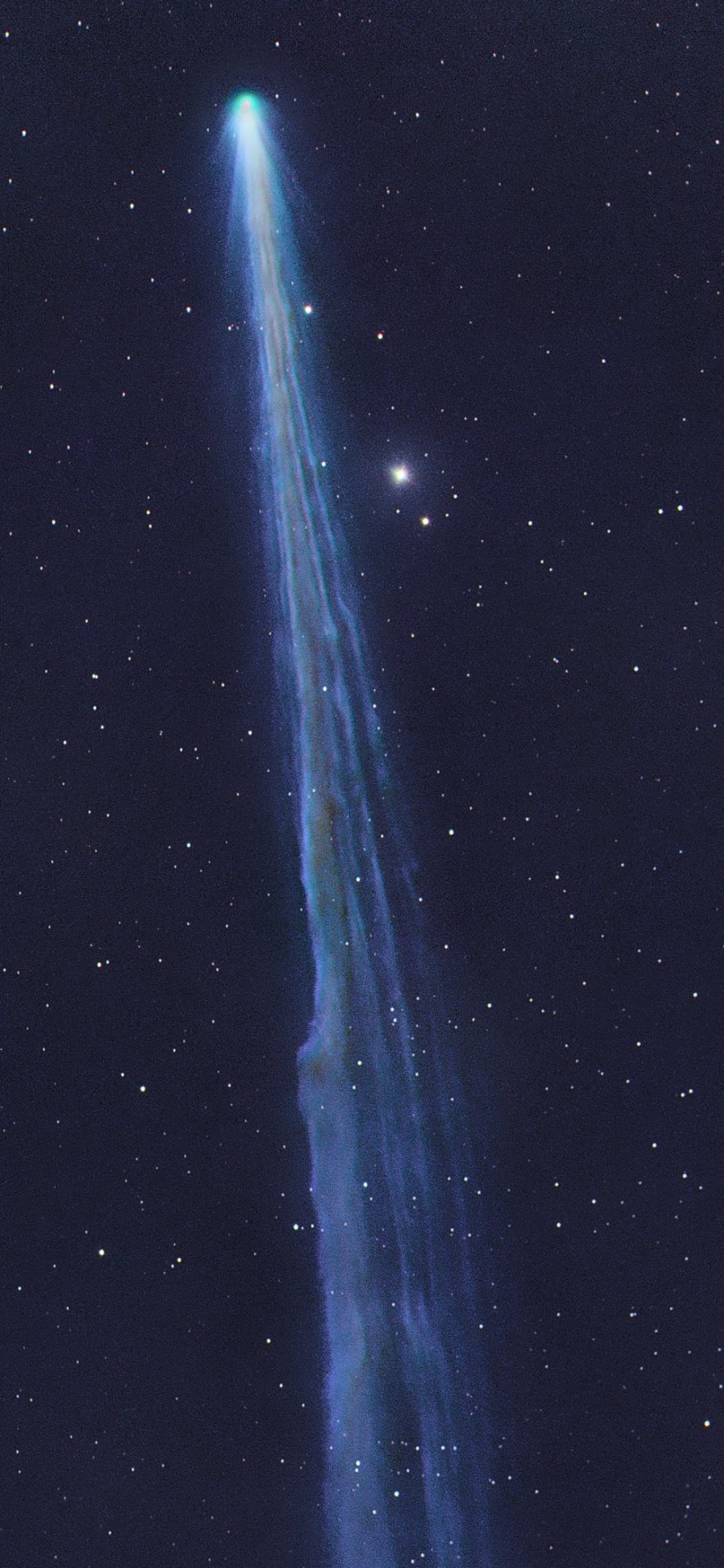Jupiter



Jupiter
Make way for the king of the solar system! 👑
New Webb images of Jupiter highlight the planet’s features, including its turbulent Great Red Spot (shown in white here), in amazing detail. These images were processed by citizen scientist Judy Schmid.
More Posts from Ad-astra-affecte-spe and Others

Corona Australis
Nebula is mostly hydrogen gas, and a small amount of metals (elements above helium) which tend to be covered as "Dust", but it's the dust that best reflect the light of the stars, and as the largest and most energetic of them are blue, you get these areas of blue haze. Hydrogen more often glows red when bombarded by UV light, the two colours together quite magical.

The area has a number of NGC objects 6726,6727,6729 but born of the same huge molecular cloud.
Our Milky Way has many such areas full of star birth, and as blue giants are not long lived, supernova and star death too.


The close-up of the Andromeda Galaxy from the Hubble Space Telescope shows how many stars there really are.
source

2023 September 28
The Deep Lagoon Image Credit & Copyright: Josep Drudis, Christian Sasse
Explanation: Ridges of glowing interstellar gas and dark dust clouds inhabit the turbulent, cosmic depths of the Lagoon Nebula. Also known as M8, The bright star forming region is about 5,000 light-years distant. It makes for a popular stop on telescopic tours of the constellation Sagittarius toward the center of our Milky Way Galaxy. Dominated by the telltale red emission of ionized hydrogen atoms recombining with stripped electrons, this deep telescopic view of the Lagoon’s central reaches is about 40 light-years across. The bright hourglass shape near the center of the frame is gas ionized and sculpted by energetic radiation and extreme stellar winds from a massive young star.
∞ Source: apod.nasa.gov/apod/ap230928.html




A beginner’s star-book, an easy guide to the stars and to the astronomical uses of the opera-glass, the field-glass and the telescope, 1912

Andromeda over the Swiss Alps Image Credit: Dzmitry Kananovich

Francesco Levy, The Constellations of Summer
-
 qqzzx reblogged this · 1 week ago
qqzzx reblogged this · 1 week ago -
 catalllo reblogged this · 4 weeks ago
catalllo reblogged this · 4 weeks ago -
 jazy1361 liked this · 2 months ago
jazy1361 liked this · 2 months ago -
 zwillinge65 liked this · 2 months ago
zwillinge65 liked this · 2 months ago -
 mirei-nari reblogged this · 2 months ago
mirei-nari reblogged this · 2 months ago -
 mirei-nari liked this · 2 months ago
mirei-nari liked this · 2 months ago -
 temet-nosce777 liked this · 4 months ago
temet-nosce777 liked this · 4 months ago -
 mg549 liked this · 4 months ago
mg549 liked this · 4 months ago -
 usagiyama reblogged this · 5 months ago
usagiyama reblogged this · 5 months ago -
 spookytri liked this · 5 months ago
spookytri liked this · 5 months ago -
 silverstar15 reblogged this · 9 months ago
silverstar15 reblogged this · 9 months ago -
 angryblondewithajetblackheart liked this · 9 months ago
angryblondewithajetblackheart liked this · 9 months ago -
 rebel55 liked this · 9 months ago
rebel55 liked this · 9 months ago -
 girllikewisdom liked this · 9 months ago
girllikewisdom liked this · 9 months ago -
 pineappleeater liked this · 9 months ago
pineappleeater liked this · 9 months ago -
 aphroditedoppelganger reblogged this · 9 months ago
aphroditedoppelganger reblogged this · 9 months ago -
 giratinazero reblogged this · 10 months ago
giratinazero reblogged this · 10 months ago -
 jessicatenbusch liked this · 10 months ago
jessicatenbusch liked this · 10 months ago -
 thisisbuds liked this · 10 months ago
thisisbuds liked this · 10 months ago -
 superearthquakefest liked this · 10 months ago
superearthquakefest liked this · 10 months ago -
 eama59 liked this · 11 months ago
eama59 liked this · 11 months ago -
 tedromanto liked this · 11 months ago
tedromanto liked this · 11 months ago -
 charleybee liked this · 11 months ago
charleybee liked this · 11 months ago -
 lostinaneon liked this · 11 months ago
lostinaneon liked this · 11 months ago -
 cherryykinks liked this · 11 months ago
cherryykinks liked this · 11 months ago -
 shandango liked this · 11 months ago
shandango liked this · 11 months ago -
 necrosis-of-the-soul liked this · 11 months ago
necrosis-of-the-soul liked this · 11 months ago -
 cosmosuniverso reblogged this · 11 months ago
cosmosuniverso reblogged this · 11 months ago -
 ummakflower liked this · 11 months ago
ummakflower liked this · 11 months ago -
 cuntypatrick liked this · 11 months ago
cuntypatrick liked this · 11 months ago -
 blu-sunflower17 liked this · 11 months ago
blu-sunflower17 liked this · 11 months ago -
 misty-tem liked this · 11 months ago
misty-tem liked this · 11 months ago -
 ajamnova liked this · 11 months ago
ajamnova liked this · 11 months ago -
 alfhildr-the-word-weaver liked this · 11 months ago
alfhildr-the-word-weaver liked this · 11 months ago -
 amiteblue liked this · 11 months ago
amiteblue liked this · 11 months ago -
 peoniess28 liked this · 11 months ago
peoniess28 liked this · 11 months ago -
 literaryheart reblogged this · 11 months ago
literaryheart reblogged this · 11 months ago -
 literaryheart liked this · 11 months ago
literaryheart liked this · 11 months ago -
 aphroditedoppelganger liked this · 11 months ago
aphroditedoppelganger liked this · 11 months ago -
 cambiolavita reblogged this · 11 months ago
cambiolavita reblogged this · 11 months ago -
 somethingcleverhere liked this · 11 months ago
somethingcleverhere liked this · 11 months ago -
 martinmartinfan liked this · 11 months ago
martinmartinfan liked this · 11 months ago -
 aguaempo liked this · 11 months ago
aguaempo liked this · 11 months ago -
 timeywimeydemigod liked this · 11 months ago
timeywimeydemigod liked this · 11 months ago -
 chuckyeager liked this · 11 months ago
chuckyeager liked this · 11 months ago -
 luffysmiles liked this · 11 months ago
luffysmiles liked this · 11 months ago

★•Astronomy, Physics, and Aerospace•★ Original and Reblogged Content curated by a NASA Solar System Ambassador
204 posts







